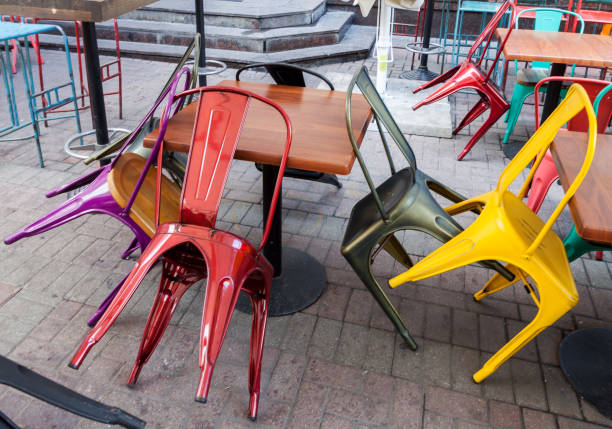Scouting for fast food real estate leases without proper planning will most likely give a futile or, at best, an unreasonably expensive outcome. It’s very similar to walking into Amazon without a shopping list: you are here for groceries, but you leave with a $500 RC helicopter.
Cost and location are only two of the critical considerations when finding fast-food leases. Therefore, while you may use the “restaurant lease near me” on various real estate websites, the results aren’t necessarily the best.

Permits, the commercial space lease, renovations, and inspections are other factors with significant influence on the profitability of a fast-food outlet. Simply put, rigorous planning and research must precede hiring a restaurant space.
Do you know the good news? It’s totally up to you. With the appropriate steps, you can secure the perfect space for restaurant leases.
Highlighting Five Practical Suggestions for Finding an Excellent Fast Food Lease
1. Set a Reasonable Budget (and Stick to it)
The first step to the perfect restaurant lease is setting a realistic budget that’s simultaneously comfortable. You’ll have to consider the following points when drawing up your budget:
- Projected Revenue: It’s essential to work out the monthly average revenue your restaurant will generate monthly because 5–10% of it goes into rents and utilities. If your drive-in burrito space requires $1,000–$2,000 as maintenance monthly, then it should have the capacity to generate $20,000 monthly.
- Market Research: Researching the market suggests valuable values, such as the average monthly revenue and maintenance costs. It would be helpful to ask existing restaurateurs in the neighborhood.
- Wiggle Room: Should you find a space that satisfies all requirements but stretches beyond your budget, it’s necessary to consider if to add extra cash. Why? You need to know if the monthly revenues will cover the rents and utilities.
- The Dip: Factors outside your control may affect sales after a few months. When they do, do you have fallback funds that can get you through the challenging period? Experts always recommend having hay for rainy days.
2. Research the Market Exhaustingly
We don’t suggest knocking yourself out during your research, but it’s important to comb the lease location thoroughly. Where is the ideal space for your restaurant? Commercial experts propose that you consider the factors below when leasing a fast-food space:
- Neighborhood: Here, the choice usually lies between picking an already established locale or one that’s upcoming. Both have their various pros and cons, so the critical thing is ensuring that your target market is available in the area you settle for.
- Street: High streets may cost much, but they require less marketing costs. In contrast, off-road locations may cost less but require higher marketing expenses. Choose a space with the maximum visibility and accessibility your budget affords.
- Complimentary Businesses: You’ll have to consider other shops nearby that aren’t in the same business line. This factor matters because some stores complement the others. For instance, a gym will drive sales to your fresh smoothie store (if that’s what you plan to sell).
- Competition: While competition is vital to business growth, it’s helpful to avoid a highly competitive location as an amateur restaurateur. You may have a tough time breathing among the clusters of fast foods with costlier budgets.
- Turnover: You may be a businessperson with an outstanding ability to secure sales, but it’s best to avoid spaces that others have turned over too often. Therefore, ask why before leasing an existing restaurant. If fast foods have continuously failed in that neighborhood, it may be best to skip the location.
3. Estimate the Required Square Footage
Fast food real estate leases have different square footage; therefore, it’s mandatory to estimate the amount of space your restaurant will need before settling for any lease.

A smaller space requires less maintenance and staff and allows you to attend to diners more quickly and efficiently. In contrast, a wider area lets in more customers and suggests your seriousness to customers.
Whichever you choose, your fast food’s concept and service style are major considerations for square footage. A pickup counter should suffice for a drive-in spot, but a full-service restaurant will require more space. The typical logic is to allocate 60% space to customers and 40% to the kitchen.
In addition, you should optimize space, especially in expensive cities like New York. There are numerous techniques for maximizing restaurant spaces, as we’ve seen on social media.
4. Evaluate the Space Potential and Required Customization
Assessing a lease’s space potential may be a step you take for the long term, but it’s imperative. After all, the foundation is always the growth blueprint for a business.
You have to consider the current state of a commercial property to have an idea of the amount customization will cost you. So, would you prefer a turnkey space or welcome the challenge of creating your commercial space yourself? The truth is, any retail space would demand some customization, but some cost more than others.
In addition, you should consider the existing features of a lease. Would you like outdoor seating arrangements for your fast food in the future? If yes, your location must have customizable outdoor space.
5. Negotiate Brilliantly
The last piece in this puzzle is your negotiation skill. It’ll be beneficial if you know how to drive a hard bargain and are not afraid to secure the best prices for yourself. You don’t have to enter into a food court lease agreement if the price is unreasonable.
While setting a realistic budget will keep your spending in check, it doesn’t mean that you secure spaces at extortive prices. This point preaches that you derive maximum value from your cash.
To secure fast food real estate leases at the best prices, you mustn’t be afraid to walk away from illogical clients. It’s also advisable to turn down the first offer most times, as the client often expects negotiation. Lastly, you may use a broker who’s more conversant with the market.
Wrap Up
Securing the best fast food real estate leases is up to you. Strictly adhere to the tips we’ve discussed above to ensure you’re obtaining the optimum value for your cash. Do justice to yourself and the efforts you put in your business.




